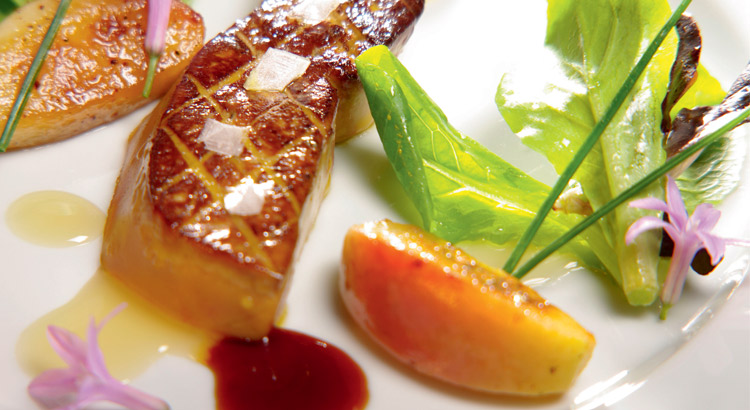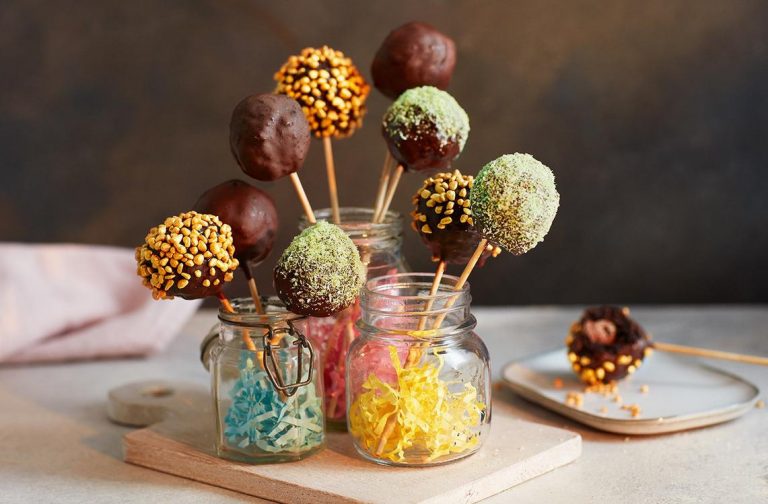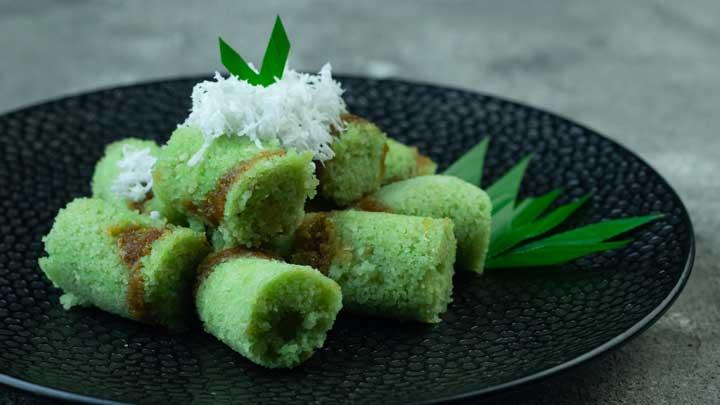Few culinary experiences compare to the indulgent richness of pan-seared foie gras. Known for its velvety texture, delicate flavor, and melt-in-your-mouth sensation, foie gras has been a symbol of gourmet dining for centuries. This exquisite dish, often reserved for special occasions and fine-dining experiences, requires precise technique to achieve its signature crispy exterior and buttery interior.
Whether paired with sweet fruit compotes, tangy balsamic reductions, or served atop toasted brioche, foie gras transforms any meal into a moment of decadence. In this guide, we’ll explore the history of foie gras, how to select and prepare it, and the best techniques for pan-searing this culinary masterpiece.
What is Foie Gras?
:max_bytes(150000):strip_icc()/__opt__aboutcom__coeus__resources__content_migration__serious_eats__seriouseats.com__recipes__images__2012__12__20121213-seared-foie-food-lab-16-e9ba8e93076e4ed6ae8e97c5c716efc4.jpg)
1. Understanding Foie Gras
Foie gras, meaning “fat liver” in French, is the liver of a duck or goose that has been specially fattened. This process, known as gavage (force-feeding), has been practiced for centuries to create a smooth, buttery, and flavorful liver prized by chefs around the world.
2. Duck vs. Goose Foie Gras
- Duck Foie Gras: More common, slightly stronger in flavor, with a rich and earthy taste.
- Goose Foie Gras: More delicate, silky and mild, considered the more traditional and luxurious option.
3. Foie Gras Grades
Foie gras is classified into three main grades:
- Grade A: The highest quality, firm and smooth with little to no blemishes, best for pan-searing.
- Grade B: Slightly softer, with minor imperfections, ideal for pâtés and terrines.
- Grade C: Least expensive, often used in sauces or mousses.
For pan-searing, always choose Grade A foie gras, as it retains its texture and shape when cooked.
How to Prepare Foie Gras for Cooking
1. Choosing the Right Cut
Foie gras is usually sold whole or pre-sliced. If buying whole, slice it into ¾-inch (2 cm) thick pieces, as thinner slices will melt too quickly during searing.
2. Deveining the Foie Gras (Optional)
While many chefs prefer to leave foie gras intact, you can carefully remove veins using a small knife or tweezers. This is optional, as high-quality foie gras will have minimal visible veins.
3. Chilling for Proper Texture
- Keep foie gras chilled until just before cooking to maintain firmness.
- If pre-sliced, place the pieces on parchment paper in the fridge for at least 30 minutes before searing.
4. Seasoning the Foie Gras
Foie gras has a naturally rich flavor, so seasoning should be minimal:
- Sea salt or fleur de sel enhances natural flavors.
- Freshly ground black pepper adds a mild kick.
- A touch of sugar (optional) can help with caramelization.
How to Pan-Sear Foie Gras to Perfection
1. Preheat the Pan
Use a cast-iron or heavy-bottomed skillet to ensure even heat distribution.
- Heat the pan over medium-high heat until very hot but not smoking.
2. No Oil or Butter Needed
Foie gras contains a high amount of fat, which will render quickly in the pan. Do not add oil or butter—the foie gras will cook in its own fat.
3. Searing the Foie Gras
- Place foie gras slices in the hot pan without overcrowding.
- Sear for 30-45 seconds on each side until golden brown and crisp.
- The interior should remain soft and custard-like, while the exterior develops a caramelized crust.
4. Draining and Resting
- Transfer foie gras to a paper towel-lined plate to remove excess fat.
- Let it rest for 1-2 minutes before plating.
🔹 Pro Tip: Save the rendered foie gras fat—it’s liquid gold for cooking eggs, potatoes, or vegetables!
Pairing and Serving Foie Gras
1. Classic Accompaniments
Foie gras pairs beautifully with sweet, tangy, and slightly goltogel acidic flavors that balance its richness. Here are some of the best accompaniments:
🍇 Fruit Compotes & Jams: Fig jam, apple chutney, or cherry compote complement the richness.
🍷 Sweet Wines: Sauternes, late-harvest Riesling, or ice wine enhance the luxurious taste.
🥖 Toasted Brioche or Baguette: A crisp, buttery base adds texture contrast.
🍏 Fresh Fruit: Slices of pear, apple, or grapes offer refreshing brightness.
🍷 Balsamic or Port Wine Reduction: A drizzle of aged balsamic or port sauce adds depth.
2. Gourmet Plating Ideas
- On a toasted brioche slice with a drizzle of fig balsamic glaze.
- Over creamy polenta with a cherry port sauce.
- With a truffle honey glaze and crushed pistachios.
- Paired with seared scallops for an ultra-luxurious dish.
Common Mistakes to Avoid When Cooking Foie Gras
- Overcooking: Foie gras cooks quickly—more than 45 seconds per side will ruin its delicate texture.
- Cooking Cold Foie Gras: Always let foie gras rest at room temperature for 5 minutes before searing.
- Using Oil or Butter: This is unnecessary, as foie gras releases plenty of fat naturally.
- Crowding the Pan: Give each slice space to sear properly. Overcrowding leads to steaming instead of searing.
- Skipping the Resting Step: Let foie gras rest before serving to allow flavors to settle.
The Ethics and Sustainability of Foie Gras
Foie gras production has faced criticism due to the traditional force-feeding process (gavage). However, some farms have adopted ethical, free-range methods that allow birds to naturally overfeed, producing high-quality foie gras without force-feeding.
For more sustainable choices, look for:
- Ethically sourced foie gras from farms that prioritize humane treatment.
- Alternative products such as “natural foie gras” from Spain and France.
- Plant-based foie gras alternatives, which replicate the creamy texture of traditional foie gras.
Conclusion: Elevate Your Culinary Experience with Foie Gras
Pan-seared foie gras is a luxurious and unforgettable dish that showcases the artistry of fine cooking. With simple seasoning, precise technique, and thoughtful pairings, you can create an elegant gourmet experience in your own kitchen.
By choosing high-quality foie gras, mastering the quick-searing technique, and pairing it with complementary flavors, you can bring a touch of decadence to any meal. Whether served as an appetizer, atop a rich main course, or as the highlight of a multi-course feast, foie gras remains one of the most iconic ingredients in haute cuisine.
Would you try cooking foie gras at home? Let us know your thoughts and favorite pairings! 🍽️




















